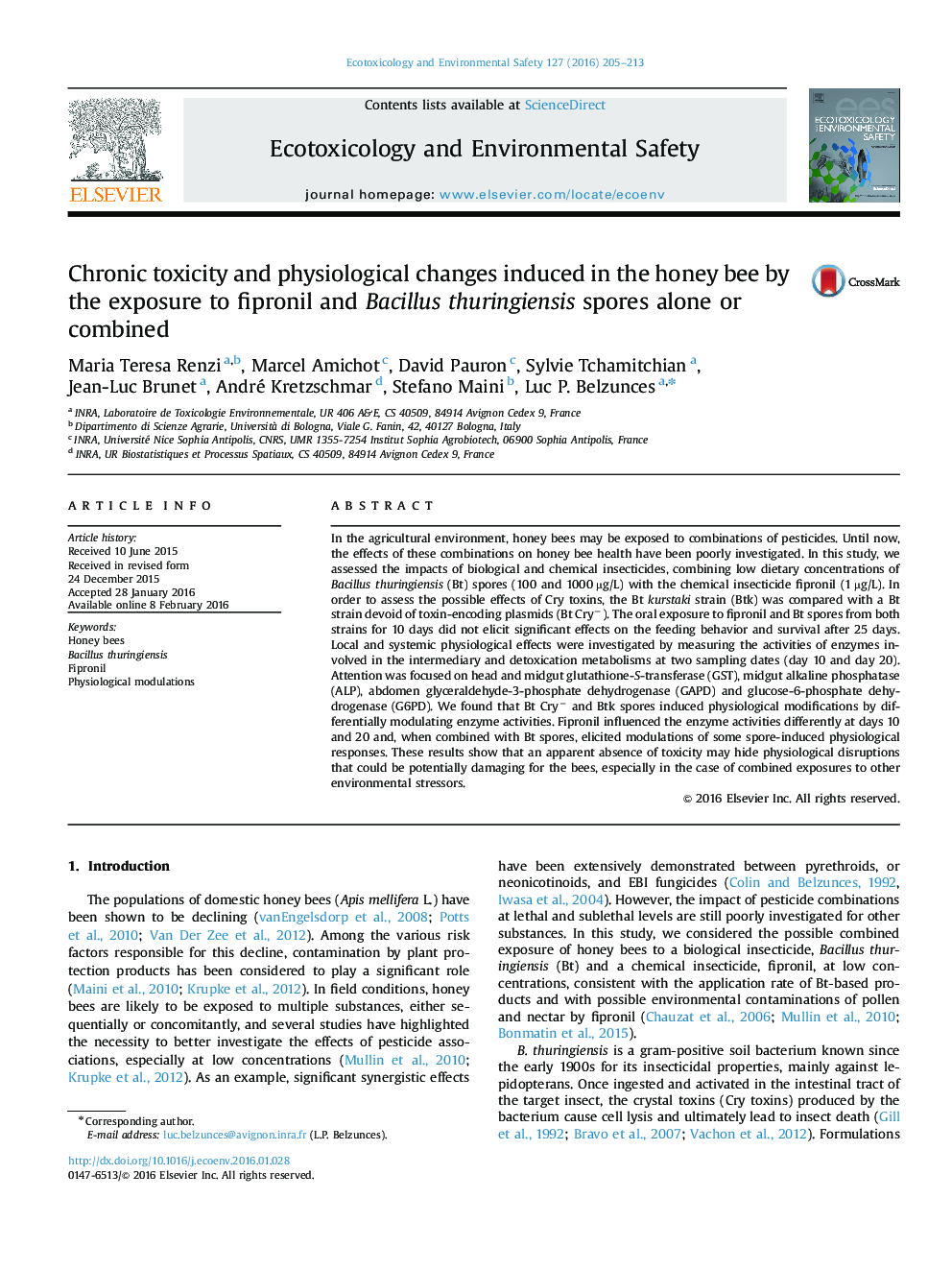| Article ID | Journal | Published Year | Pages | File Type |
|---|---|---|---|---|
| 4419473 | Ecotoxicology and Environmental Safety | 2016 | 9 Pages |
•The combination of Bt spores and fipronil does not induce lethality in the honey bee.•An apparent absence of toxicity may hide physiological disruptions.•Fipronil and Bt spores can reciprocally modulate their physiological effects.
In the agricultural environment, honey bees may be exposed to combinations of pesticides. Until now, the effects of these combinations on honey bee health have been poorly investigated. In this study, we assessed the impacts of biological and chemical insecticides, combining low dietary concentrations of Bacillus thuringiensis (Bt) spores (100 and 1000 µg/L) with the chemical insecticide fipronil (1 µg/L). In order to assess the possible effects of Cry toxins, the Bt kurstaki strain (Btk) was compared with a Bt strain devoid of toxin-encoding plasmids (Bt Cry−). The oral exposure to fipronil and Bt spores from both strains for 10 days did not elicit significant effects on the feeding behavior and survival after 25 days. Local and systemic physiological effects were investigated by measuring the activities of enzymes involved in the intermediary and detoxication metabolisms at two sampling dates (day 10 and day 20). Attention was focused on head and midgut glutathione-S-transferase (GST), midgut alkaline phosphatase (ALP), abdomen glyceraldehyde-3-phosphate dehydrogenase (GAPD) and glucose-6-phosphate dehydrogenase (G6PD). We found that Bt Cry− and Btk spores induced physiological modifications by differentially modulating enzyme activities. Fipronil influenced the enzyme activities differently at days 10 and 20 and, when combined with Bt spores, elicited modulations of some spore-induced physiological responses. These results show that an apparent absence of toxicity may hide physiological disruptions that could be potentially damaging for the bees, especially in the case of combined exposures to other environmental stressors.
